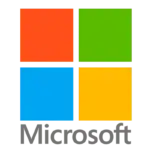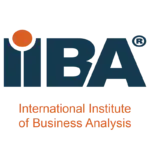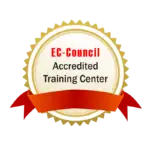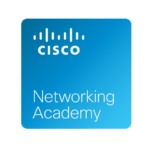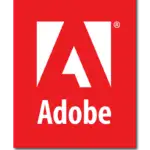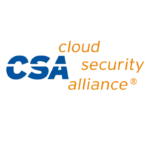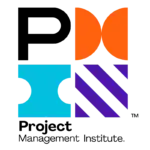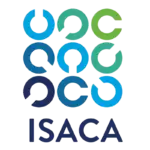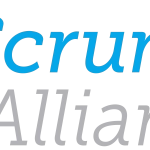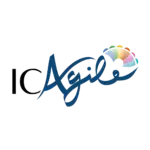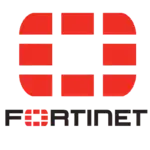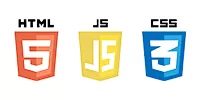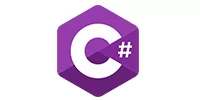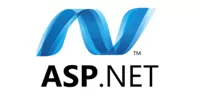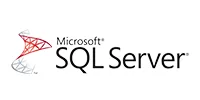- Courses
 Business Management
Business Management IT Networks and ITSM
IT Networks and ITSM Data Management
Data Management Information Security
Information Security Software Development
Software Development Digital Transformation
Digital Transformation Graphic Design
Graphic Design
- Career Paths
- Vendors
ASP.NET Full-Stack Developer Career Path
Transform ideas into Enterprise-Grade Applications Master ASP.NET full-stack development today!
In Collaboration With industry experts
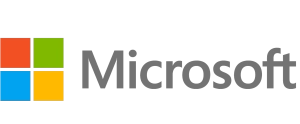








Overview
The demand for ASP.NET full stack developers is projected to grow by 20% between 2024 and 2030, driven by the increasing need for scalable web applications in industries like finance, healthcare, and e-commerce.
Master ASP.NET Full Stack Development and Build Scalable Web Applications, Unlock a world of opportunities by mastering ASP.NET Full Stack Development and becoming a key player in web application development.
Why Choose ASP.NET Full Stack Development?
- High Demand & Career Growth – Businesses across industries seek skilled developers to build secure, scalable web applications.
- Versatile Skillset – Gain expertise in C#, ASP.NET Core, SQL Server, and front-end technologies to develop end-to-end solutions.
- Job Flexibility – Work full-time, freelance, or remotely, expanding your career possibilities globally.
What You’ll Learn:
- Front-End Development – Build dynamic, responsive user interfaces with HTML, CSS, JavaScript, and modern frameworks.
- Back-End Development – Master C# and ASP.NET Core to develop powerful, enterprise-grade applications.
- Database Management – Learn SQL Server and Entity Framework Core to manage and optimize data storage.
- RESTful APIs & Integration – Develop secure APIs to connect applications and enable seamless data exchange.
Equip yourself with the skills to become a job-ready ASP.NET Full Stack Developer and build cutting-edge web applications. Take the first step in your career today!
Create a Job-Ready Project Portfolio
With personalized support, hands-on labs, and a curriculum tailored to real-world scenarios, you’ll be ready to take on complex challenges and boost your career prospects.
+180 hours of extensive learning
Gain in-depth knowledge through a mix of instructor-led sessions and hands-on exercises.
Practical Workshops Sessions
Gain hands-on experience with tools and techniques in interactive workshops.
Certification with Credibility
Showcase your skills with a accregated certificate to enhance your professional profile
Industry-Relevant Curriculum
Learn practical tools and techniques tailored to solve real-world business challenges.
10% OFF For Limited Time
Career Opportunities for ASP.NET Full-Stack Developer
Graduates of the ASP.NET Full Stack Developer track can pursue roles like Full Stack Developer, ASP.NET Developer, Back-End Developer, or Software Engineer in industries such as technology, finance, healthcare, and e-commerce. With skills suited for full-time, part-time, or freelance work, they are ready to develop powerful, scalable web applications and shape the future of digital solutions! 🚀
Graduates of CLS Learning Solutions’ ASP.NET Full Stack Developer track are prepared for diverse roles in web development, including:
- Full Stack Developer – Designs, develops, and maintains both front-end and back-end components of web applications.
- Back-End Developer – Builds scalable server-side applications using C#, ASP.NET Core, and SQL Server.
- ASP.NET Developer – Specializes in building dynamic, secure web applications using ASP.NET Core MVC and Web APIs.
- Software Engineer – Develops enterprise-grade solutions with robust architecture and cloud integration.
With these industry-relevant skills, graduates can pursue full-time, freelance, or remote opportunities in the ever-growing tech industry! 🚀
Our Graduates' Success Stories

Omar Omad Eldin

Mohamed Alaa

Group of our Grads
Why Learn from CLS?
Years of Experience
Since 1995, we’ve been a trusted training partner, helping individuals and organizations achieve their goals.
Expert Instructors
Learn from with top experts in the industry guranteed and get career assistance and coaching.
Hands-On Learning
Our courses are designed with real-world projects and practical applications.
What you will learn in this career path?
Module 1: Introduction to Programming
- Fundamentals of Programming
- C# Programming Overview
Module 2: Working with Variables and Data Types
- Variables
- Data Types
Module 3: Control Flow Statements
- Conditional Statements
- Switch Case Statement
Module 4: Iteration and Loops
- Looping Structures
Module 5: Functions in C#
- Defining Functions
- Access Modifiers
- Function Parameters
Module 6: Classes and Objects
- Introduction to Classes
- Class Members
- Understand the fundamentals of programming and the structure of a C# program.
- Apply variables and data types effectively to store and manipulate data.
- Implement decision-making logic using conditional statements such as
if,else,nested if, andswitch-case. - Control program flow using different types of loops including
for,while,do-while, and their nested versions. - Design and use functions to create modular and reusable code, including functions with parameters and return values.
- Understand and apply access modifiers to control the visibility and accessibility of functions.
- Create and work with classes and objects, applying object-oriented principles such as encapsulation.
- Define and manage properties, constructors, and destructors within a class for proper object lifecycle management.
- Build a strong foundation in structured and object-oriented programming, preparing learners for more advanced C# and .NET development topics.
Module 1: Object-Oriented Programming (OOP) Concepts
- Introduction to OOP
- Encapsulation
- Abstraction
- Polymorphism
Module 2: Advanced C# Features
- Interface Classes
- Virtual Methods and Overriding
- Method Overloading
Module 3: C# and .NET Framework
- Introduction to the .NET Framework
Module 4: Data Structures in C#
- Arrays
- Collections and Generics
Module 5: Threading and Asynchronous Programming
- Threading in C#
- Introduction to Asynchronous Programming
- Master object-oriented programming (OOP) principles in C#, including abstraction, encapsulation, inheritance, and polymorphism.
- Differentiate between abstract classes and interfaces, and apply them appropriately in real-world application design.
- Utilize function overloading and virtual functions to build flexible and extendable code structures.
- Leverage the .NET Framework to develop robust, scalable, and maintainable applications.
- Apply advanced data structures such as arrays, generic lists, sorted lists, stacks, and queues to manage and organize data efficiently.
- Understand and implement multithreading to create responsive and high-performance applications.
- Design modular and efficient programs using advanced OOP techniques and structured problem-solving skills.
Module 1: Introduction to HTML5
- HTML5 Structure and Content
- HTML5 Tags and Elements
- Links and Media
- Semantic HTML5 Elements
- Forms and Inputs
Module 2: Advanced HTML5 Features
- HTML5 Media Embedding
- Web Accessibility and SEO Basics
Module 3: Introduction to CSS3
- CSS3 Basics
- CSS Layout Techniques
- Styling Elements
- Advanced CSS Styling Techniques
Module 4: Advanced CSS3
- Responsive Web Design
- CSS3 Best Practices
- Building Real-World Web Layouts
Module 5: Final Project & Best Practices
- Hands-on Project
- Understand and apply the structure of HTML5, including document layout, semantic tags, and multimedia integration.
- Create and organize web content using tags for text formatting, images, audio, video, hyperlinks, and embedded content such as YouTube and Google Maps.
- Design user-friendly web forms using various input types, buttons, checkboxes, radio buttons, and selection menus.
- Develop responsive and visually appealing websites using CSS3 and modern layout techniques such as Flexbox and Grid.
- Implement styling techniques with class and ID selectors, internal and external stylesheets, and advanced background and font customization.
- Create animated web elements and interactive user experiences with CSS animations and transitions.
- Build various types of website layouts, including boxed, parallax, one-page, full-screen, e-commerce, landing pages, and masonry grids.
- Ensure compatibility and responsiveness across different devices using media queries and font compatibility methods.
- Gain a practical foundation in front-end development, enabling further growth in web design, UI/UX, and modern JavaScript frameworks.
- Module 1: Introduction to Bootstrap and Responsive Web Design
- Module 2: The Bootstrap Grid System
- Module 3: Customizing Layouts with Columns and Rows
- Module 4: Navigation and Menu Design
- Module 5: Leveraging Built-in Bootstrap Classes
- Module 6: User Interface Kits and Customization
- Module 7: CSS Priority and Integration with Bootstrap
- Module 8: Implementing Responsive Media Queries
- Module 9: Advanced Responsive Design Techniques
- Module 10: Project Implementation and Best Practices
- Understand the Bootstrap framework structure, including its grid system, columns, and rows for building responsive layouts.
- Differentiate between container and container-fluid classes and apply them appropriately for adaptive web design.
- Create dynamic and responsive navigation menus, including user-friendly mobile menus.
- Leverage Bootstrap’s built-in UI components and utility classes to accelerate front-end development.
- Effectively integrate Bootstrap with custom CSS, understanding class priority and conflict resolution.
- Design responsive web pages that adapt seamlessly to various screen sizes and devices using media queries.
- Utilize UI kits and pre-designed elements to build professional, modern user interfaces with minimal effort.
- Master mobile-first design principles, enabling participants to build sleek, consistent, and scalable web experiences.
- Module 1: JavaScript Fundamentals
- JavaScript in Action
- Data Essentials
- Operators
- Module 2: Control Flow & Data Structures
- Conditional Logic
- Iteration Techniques
- Arrays
- Module 3: Functions & Advanced Functional Programming
- Function Fundamentals
- Advanced Functions
- Module 4: Object-Oriented Programming in JavaScript
- Classes & Objects
- Advanced OOP Concepts
- Module 5: Utilizing Built-In JavaScript Libraries
- Core Utility Classes
- Module 6: DOM Manipulation & Web Application Development
- Dynamic Web Content
- Building Interactive Applications
-
Understand the Role of JavaScript: Distinguish between client-side and server-side JavaScript applications.
-
Apply Core JavaScript Syntax and Concepts: Work confidently with variables, data types, operators, and control structures (if, switch, loops).
-
Utilize Advanced Programming Techniques: Define and use functions, anonymous functions, arrow functions, and closures effectively, Employ callback functions and method chaining for cleaner and more efficient code.
-
Implement Object-Oriented Programming (OOP) in JavaScript: Create and manage classes and objects, Apply OOP principles such as inheritance, encapsulation, access modifiers, method overriding, and getters/setters.
-
Work with Data Structures: Handle arrays using iteration methods (forEach, filter, sort), Leverage built-in classes like Math, Random, and Date to solve complex tasks.
-
Manipulate the DOM Using JavaScript: Dynamically update HTML and CSS content using JavaScript, Add interactivity and logic to web pages through event handling and style manipulation.
-
Develop Interactive Web Applications: Integrate JavaScript into real-world projects.
- Introduction to Figma
- Overview of Figma and its role in design and development.
- Understanding Figma’s interface and features.
- Setting up a Figma account and starting a project.
- Introduction to Figma’s design components (frames, layers, components, etc.).
- How to collaborate with designers and other developers in Figma.
- Version control and managing project iterations.
- Real-time collaboration and comments.
- Sharing designs and prototypes with stakeholders.
- Extracting CSS and design specifications.
- Understanding Figma’s code inspection features for developers.
- Export design assets for development, ensuring the proper handoff from design to code.
- Inspect design elements, extract CSS, and gather assets needed for front-end development.
- Datetime
- Understand the fundamentals of Figma and its importance in modern UI/UX design and front-end development workflows.
- Navigate Figma’s interface efficiently, utilizing tools like frames, layers, and components for clean and scalable design.
- Set up and manage design projects, including creating and organizing files for effective collaboration.
- Collaborate with team members and stakeholders using real-time editing, commenting, and version control features.
- Share designs and interactive prototypes for review, feedback, and approval.
- Extract CSS code and design specifications using Figma’s built-in inspection tools to streamline development handoff.
- Export design assets (images, icons, SVGs, etc.) in the correct formats and resolutions for front-end implementation.
- Inspect design properties and generate accurate front-end-ready code snippets to bridge the gap between design and development.
- Module 1: Introduction to Databases & MS SQL Server
- Module 2: Database Design Fundamentals
- Module 3: Normalization Techniques
- Module 4: Creating and Managing Tables
- Module 5: Querying Data with T-SQL – Core
- Module 6: Joins and Subqueries
- Module 7: Stored Procedures and Views
- Module 8: Indexes, Performance & Transactions
- Module 9: Security & Permissions in SQL Server
- Module 10: Mini Project & Best Practices
- Understand Database Fundamentals: Grasp key database concepts, the role of relational databases, and the architecture of Microsoft SQL Server.
- Design Efficient Database Structures: Apply best practices in database modeling and normalization to create scalable and optimized database schemas.
- Implement and Manage SQL Server Databases: Create and manage databases, tables, and relationships using SQL Server Management Studio (SSMS).
- Write and Optimize T-SQL Queries: Use Transact-SQL (T-SQL) to retrieve, filter, sort, and manipulate data effectively.
- Work with Joins and Subqueries: Combine data across multiple tables using JOINs and write powerful nested queries.
- Develop Stored Procedures and Views: Create modular, reusable SQL code through stored procedures and encapsulate query logic using views.
- Apply Indexing and Transaction Management: Optimize performance with indexes and manage data integrity using transactions and error handling.
- Secure Databases and Manage Permissions: Control access to data and database objects by managing users, roles, and permissions.
- Build and Present a Real-Life Database Project: Apply learned skills in a capstone project, from design to implementation, using professional standards and tools.
- Module 1: Introduction to Entity Framework
- Module 2: Language Integrated Query (LINQ)
- Module 3: Entity Framework Architecture
- Module 4: Data Access Approaches in EF
- Database First
- Model First
- Code First
- Module 5: Lambda Expressions & LINQ Method Syntax
- Module 6: Advanced Querying and Execution
- Module 7: Configuration and Setup
- Module 8: Real-World Project Implementation
- Understand the fundamentals and purpose of Entity Framework (EF) as an Object-Relational Mapping (ORM) tool and how it simplifies data access in .NET applications.
- Effectively use Language Integrated Query (LINQ) to perform powerful, type-safe queries against databases using both query and method syntax.
- Explore and comprehend the architecture of Entity Framework, including key components like
DbContext,DbSet, and the EF pipeline. - Master the three primary EF development approaches — Database First, Model First, and Code First — and apply the appropriate one for various project scenarios.
- Write advanced queries using lambda expressions and LINQ method chaining, enabling expressive and optimized data access.
- Execute advanced querying techniques, including eager/lazy loading, raw SQL queries, asynchronous operations, and query performance strategies.
- Configure Entity Framework effectively using configuration files and dependency injection, ensuring proper integration into real-world .NET applications.
- Apply Entity Framework in practical project scenarios, following best practices for scalable architecture, maintainability, and testing of data access layers.
- Module 1: Getting Started with ASP.NET MVC Core
- Module 2: Controllers and Actions
- Module 3: Views and Razor Syntax
- Module 4: Models and Data Binding
- Module 5: Forms and Data Entry
- Module 6: Entity Framework Integration
- Module 7: View Engines and Advanced Topics
-
Understand the ASP.NET MVC Core Architecture
Grasp the MVC design pattern and its role in modern web development. -
Develop Dynamic Web Applications: Build responsive, data-driven web applications using ASP.NET MVC Core and Razor view engine.
-
Implement Controllers, Views, and Models Efficiently: Create and manage controllers, design Razor views, and implement models for seamless data binding and interaction.
-
Manage Data Using Entity Framework Core: Perform CRUD operations, handle relationships between tables, and integrate databases using EF Core.
-
Secure Applications with Best Practices: Protect against common vulnerabilities like Cross-Site Scripting (XSS) and ensure safe model binding and form submissions.
-
Customize Views and Layouts: Leverage Razor syntax, layout pages, and partial views to build consistent and maintainable user interfaces.
-
Utilize HTML Helpers and Form Components: Implement form elements, HTML helpers, and manage user input through validation and binding techniques.
-
Handle Advanced Routing and Data Transfer: Work with route parameters, model binding, DTOs, and interface-based data structures for scalable applications.
-
Enhance Collaboration and Maintainability: Understand how to structure MVC applications for readability, team collaboration, and long-term maintenance.
-
Build Real-World MVC Project
- Module 1: Introduction to APIs & ASP.NET MVC Core
- Module 2: Creating Your First Web API
- Module 3: HTTP Verbs and Routing
- Module 4: Model Binding and Validation
- Module 5: Dependency Injection & Services
- Module 6: Data Access Using Entity Framework Core
- Module 7: Exception Handling and Logging
- Module 8: Securing Your API
- Module 9: Versioning & Documentation
- Module 10: Final Project & Best Practices
- Understand the fundamentals of RESTful API architecture and how it applies to modern web development.
- Set up and configure ASP.NET Core Web API projects using Visual Studio and .NET Core tools.
- Design and implement API endpoints using appropriate HTTP methods (GET, POST, PUT, DELETE) and routing techniques.
- Build data models and apply validation techniques using model binding and data annotations.
- Develop structured and reusable services using dependency injection and layered architecture principles.
- Integrate Entity Framework Core for database access and perform CRUD operations efficiently.
- Implement error handling and logging mechanisms to ensure reliable and maintainable API behavior.
- Apply basic API security practices, including request validation, CORS, and token-based authentication concepts.
- Document APIs effectively using Swagger/OpenAPI, making them easy to test, explore, and consume.
- Build and deploy a fully functional Web API project, applying best practices for performance, scalability, and maintainability.
- Module 1: Introduction to Web Hosting
- Module 2: Domains & DNS
- Module 3: Professional Email Setup
- Module 4: Deploying Web Applications
- Module 5: Database Setup & Configuration
- Module 6: Best Practices & Troubleshooting
- Understand Web Hosting Fundamentals: Gain a clear understanding of different types of hosting services (Shared, VPS, Dedicated, Cloud) and how to select the appropriate option based on project needs.
- Configure and Manage Domains: Learn how to register a domain, configure DNS settings, and manage subdomains effectively.
- Set Up Professional Email Services: Create and manage formal business email accounts using domain-based email hosting solutions.
- Deploy Web Applications to Live Servers: Upload and publish websites using cPanel, FTP, or control panel tools, while understanding file structure and server requirements.
- Configure and Manage Online Databases: Create, import, and connect databases (e.g., MySQL, MSSQL) to hosted applications securely and efficiently.
- Implement Deployment Best Practices: Apply essential security practices, troubleshoot common deployment issues, and optimize website performance post-deployment.
- Bridge the Gap Between Development and Production: Understand the end-to-end process from local development to live deployment, enabling seamless project delivery and client handover.
- Basic programming knowledge
- This career path is designed for beginners and professionals looking to master ASP.NET, C#, and full-stack web development.
Boost your career with our certification
Gain industry-recognized expertise in full-stack development with our PHP Full Stack Developer career path. Master PHP, Laravel, MySQL, JavaScript, and front-end technologies to build dynamic, high-performing web applications. Stand out in the job market and unlock endless opportunities in web development!

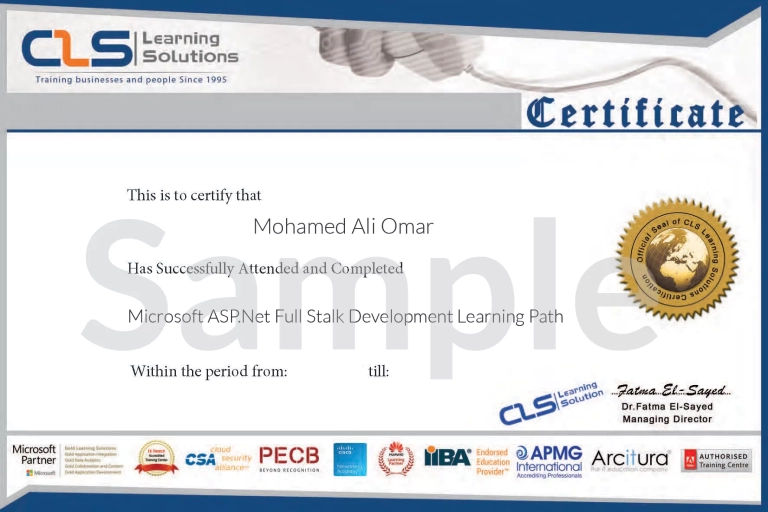
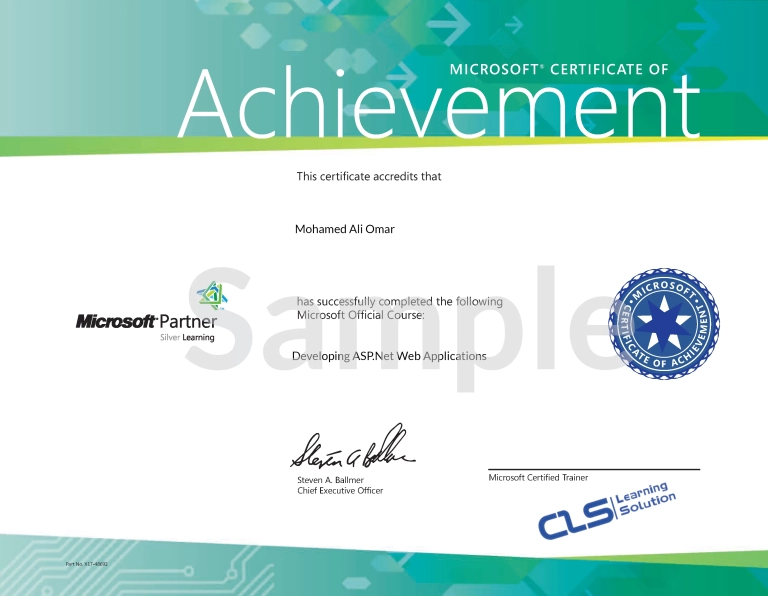
What Learners Are Saying

Vivian Fayez

Nada Osman

Samer Eltawansy

Amr Azab

Inaam Badawi

Muhammad Amjad Karara

Mahmoud Ibrahim

Abdelrahman Ahmed

Areej Sofy

Mohamed Saeed

Mohamed Mekkawy

Alyaa Gaber

Michael Fahmy

Mohamed Samir

Aziza moatz

Mohamed Abdel aziz

Hisham Ibrahim

Mohand Khaled
Ahmed ElGhobashy

Ahmed Mostafa Mahmoud

Mohamed Aldremly

Ahmed Elkomy

Mohamed Taha

Mohamed Hassan

Sama Aly

Ahmed Nehro
Training Locations
Our classrooms in provide an in-person learning experience with direct interaction with instructors,These locations are equipped with modern facilities that support collaboration, practical training, and focused attention
Cairo Branch
- 5 Mesaha Square , Dokki - Cairo
Giza Branch
- 5 Mesaha Square , Dokki - Cairo
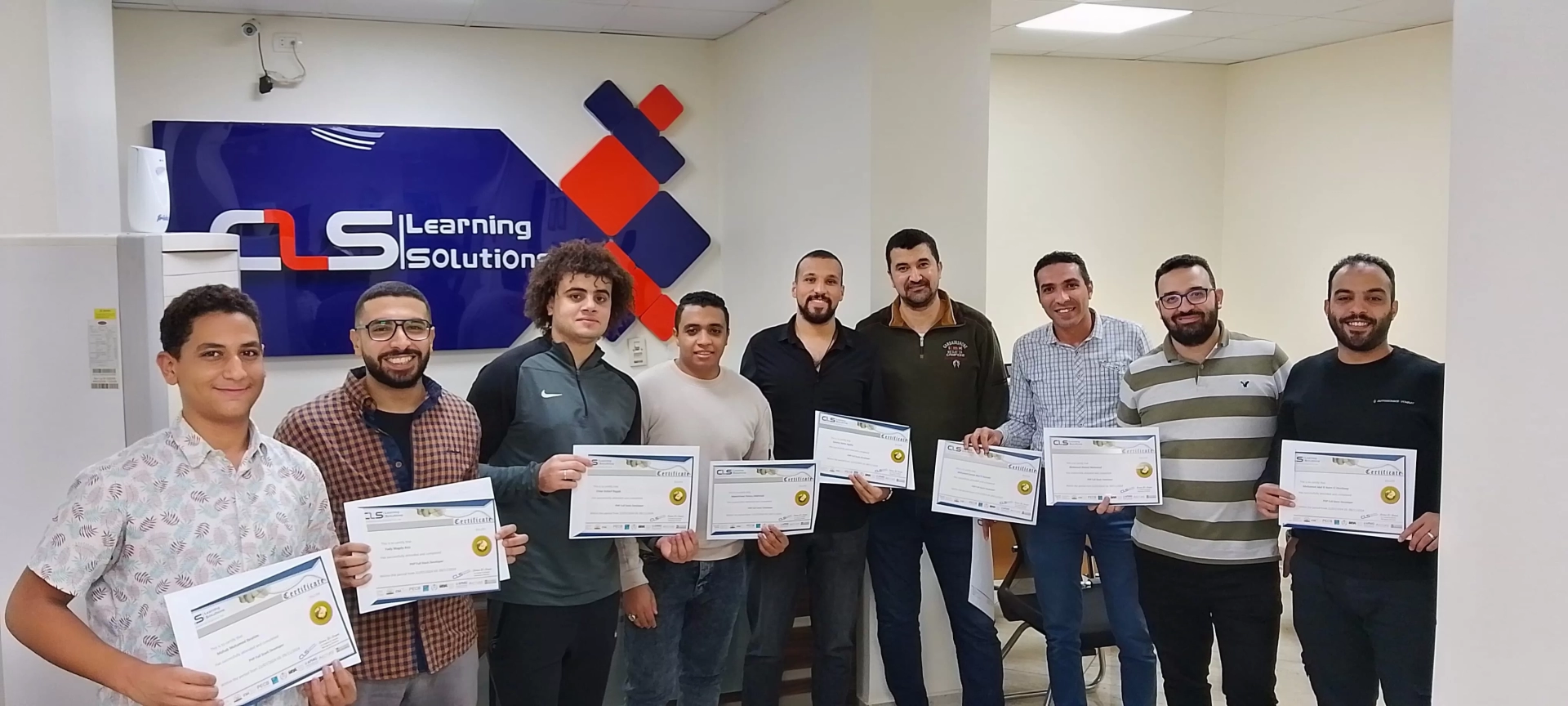


We offer two tailored virtual training formats, the Self-Paced Training to Enjoy the freedom to study anytime, anywhere and the Virtual Interactive Instructor-Led Training with flexible sessions that connect you with expert instructors in real time
Virtual Instructor-Led Training
- Live, at Programmable Hours
Self-Paced Training
- Learn Anytime, Anywhere!



We offer on-site training at your company’s premises. Tailored to your business needs, these sessions allow employees to learn without leaving the workplace.
Our expert instructors will deliver courses designed to enhance skills and drive performance, all in a familiar and comfortable environment.
- At your company’s premises


The CLS Learning Solution Advantage
Experience
We have been in the market since 1995, and we kept accumulating experience in the training business, and providing training for more than 200,000 trainees ever since, in Egypt, and the MENA region.
Premium Facilities
CLS facilities are well-equipped with strong hardware and software technologies that aid both students and trainers lead very effective smooth training programs.
Customer Support
We provide our clients with the best solutions, customized to their specific needs and goals. Our team is highly qualified to answer whatever questions you have.
Global Accredited
CLS is an authorized and accredited partner by technology leaders. This means that our training programs are of the highest quality source materials.
Up To Date
We keep tabs on every change in the market and the technology field, so our training programs will always be updated up to the World-class latest standards, and adapted to the global shape-shifting job market.
Certified Instructors
We select the best instructors, who are certified from trustworthy international vendors. They share their professional experience with the Trainees, so they can have a clear hands-on experience.
10% OFF For Limited Time
© 2025 - CLS Learning - Solutions | All Rights Reserved.


